Instrumentation plays a pivotal role in various industrial plants, providing the necessary data and control mechanisms to keep operations smooth, efficient, and safe. In this evolving field, professionals and students alike should have a broad understanding of key concepts and techniques.
Industrial Instrumentation Questions

The following list of 300 industrial instrumentation questions covers various technical aspects from sensors and transmitters to control systems.
- What is the working principle of a Bourdon tube pressure gauge?
- How is a thermocouple different from an RTD?
- Describe the purpose of a 4-20 mA current loop in industrial instrumentation.
- What is a PID controller and how is it used in process control?
- Explain the principle behind magnetic flow meters.
- How does a capacitive level sensor work?
- What is deadband in control systems?
- What is the role of HART protocol in industrial instrumentation?
- Describe the different types of temperature sensors.
- What is the significance of safety instrumented systems (SIS)?
- Explain the concept of “Control Valve” in process control.
- What are the primary elements of a distributed control system (DCS)?
- How is an orifice plate used for flow measurement?
- What are the principles of ultrasonic level measurement?
- Describe the use of strain gauges in force measurement.
- What are the applications of a vortex flowmeter?
- How is process control carried out in a SCADA system?
- Explain the term “Instrumentation Amplifier” and its importance.
- Describe the calibration process for a pressure transmitter.
- What are “smart sensors” and how are they used in modern industrial applications?
- What is a Zener barrier, and where is it used?
- Explain the working of a mass flow meter.
- Describe the principle of radar level measurement.
- How are Coriolis flow meters calibrated?
- What is a PLC, and how does it differ from a microcontroller?
- Explain the function of a pneumatic control valve.
- What is the use of the Routh-Hurwitz criterion in control systems?
- How do pH meters work?
- What is the significance of intrinsic safety in process instrumentation?
- Describe the concept of process hysteresis.
- What is open-loop and closed-loop control?
- How is the term “gain” defined in control systems?
- What is the “NAMUR” sensor interface?
- How does a variable frequency drive (VFD) operate?
- What are the different types of actuators in process control?
- Explain the purpose of a solenoid valve in process control.
- Describe how a conductivity meter works.
- What are the classifications of hazardous areas in industrial environments?
- Explain the role of Fieldbus in industrial networks.
- What is loop tuning, and why is it important?
- Describe the function of a motor control center (MCC) in industrial applications.
- What are soft sensors?
- How does optical fiber technology work in industrial instrumentation?
- Explain the advantages of using “redundancy” in control systems.
- What is Total Harmonic Distortion (THD) in electrical systems?
- Describe the different types of control charts in statistical process control.
- What are the categories of process variables in control systems?
- How does a piezoelectric sensor work?
- What is cascade control?
- Describe the process of thermowell design and selection.
- How do you calculate the span and zero of an instrument?
- What is “Linearity” in an instrument’s performance?
- Describe the limitations of pneumatic control systems.
- What is the purpose of RTU (Remote Terminal Unit) in SCADA?
- How are impulse lines used in flow measurement?
- Describe the function of a Coriolis mass flowmeter.
- What is instrument air, and why is it important?
- Explain the principle of hot-wire anemometry.
- How do you perform load calculations in electrical design?
- What are the types of pressure gauges used in industry?
- How is filtering done in data acquisition systems?
- Explain the concept of lead and lag in control systems.
- What are the key factors affecting accuracy in instrumentation?
- What is multiplexing in data acquisition systems?
- How do you calculate flow rates in pipelines?
- What are the various types of vibration sensors?
- What is an isolation valve, and where is it used?
- How do you handle noise in instrumentation signals?
- Describe the application of MEMS sensors in industrial plants.
- What is a pulse width modulation (PWM) signal?
- Explain the function of a diaphragm seal in pressure measurement.
- Describe the types of electrical grounding techniques in industrial plants.
- How do servo motors work in industrial control?
- What are the methods for tuning a PID controller?
- How do you analyze a control loop for stability?
- Explain the concept of process variables and setpoints in control systems.
- What are the parameters affecting level measurement?
- How are differential pressure transmitters used for flow measurement?
- Describe the function of a Hall effect sensor.
- What is remote sensing in industrial control?
- Describe the structure of an I/O module in a PLC.
- What is a controlled variable in a control system?
- How is the term “sensitivity” defined in instrumentation?
- What is the impact of sensor drift in long-term measurements?
- What is signal conditioning, and why is it crucial in data acquisition systems?
- Explain the principle of “batch control” in process systems.
- Describe the different types of encoders used in motion control.
- What are the advantages of using wireless sensor networks in industrial applications?
- How does an electro-pneumatic positioner work in control valve assemblies?
- What are the factors affecting the accuracy of RTDs?
- Describe the use of “Power over Ethernet” (PoE) in industrial networks.
- What are the basic components of a hydraulic control system?
- Explain the function of a variable area flowmeter.
- How are setpoints determined in a control loop?
- Describe the different modes of data transmission in a SCADA system.
- What are the limitations of using mechanical switches in industrial control?
- Explain the principle of “feedforward control” in industrial systems.
- What is “dead time” in control systems, and how is it managed?
- How do you perform valve sizing for flow control applications?
- Explain the principle of the HART gateway.
- How does a “vibration sensor” work in industrial machinery?
- What is a “radar level transmitter,” and how does it function?
- What are “negative temperature coefficient (NTC) thermistors”?
- Explain the role of a “gauge pressure transmitter.”
- How do “ultrasonic thickness gauges” work?
- Describe the principle of operation of a “catalytic sensor” for gas detection.
- What is a “gyroscope sensor,” and what are its industrial applications?
- How does “optical character recognition (OCR)” technology work in automated systems?
- What are “limit switches,” and how are they used in industrial applications?
- Describe the different types of “gas analyzers” used in industries.
- How does a “dew point meter” work?
- Explain how a “viscosity meter” operates.
- What are the different types of “torque sensors”?
- How do “chemical sensors” function in environmental monitoring?
- What are the applications of “sound level meters” in an industrial plant?
- Explain the operation of a “digital potentiometer.”
- What is the disadvantage of a “tilt sensor“?
- What is an “LCR meter,” and how is it different from a multimeter?
- Describe the operation of “angular position sensors.”
- What are “fieldbus systems” and how do they improve process control?
- How does “electromagnetic interference (EMI)” affect sensor readings?
- What are “intrinsically safe sensors”?
- Explain the operation of “micro-electromechanical systems (MEMS)” sensors.
- Describe the applications of “color sensors” in automated manufacturing.
- What are “power quality analyzers,” and what do they measure?
- Explain the working principle of a “float-operated level switch.”
- What are “conductance level sensors,” and how do they operate?
- Describe the working principle of a “barometer.”
- What is a “spectrometer,” and what are its applications?
- Explain the role of “hysteresis” in control systems and how it affects performance.
- What is “deadband” in a control loop?
- How does a “fuel flow meter” operate in industrial engines?
- What are “distance measuring sensors” and how do they work?
- Describe the working principle of “flow computers” in gas and liquid measurement.
- What is “noise” in electrical signals and how is it mitigated in instrumentation?
- What are “precision resistors,” and how do they differ from standard resistors?
- Describe the types of “thermal imagers” and their applications.
- How do “calorimeters” work in chemical processes?
- What is a “hygrometer,” and how does it differ from a humidity sensor?
- What is a “light curtain,” and what are its safety applications?
- Describe the use of “non-destructive testing (NDT)” methods in industrial applications.
- What is a “magnetic level gauge,” and how does it function?
- Explain how “accelerometers” are used in industrial applications.
- What is a “dissolved oxygen meter,” and how does it work?
- Describe the types of “signal conditioners” in data acquisition systems.
- What is “data logging,” and what are its applications in process control?
- Explain the working principle of a “fluidic oscillator.”
- How do “incremental encoders” differ from “absolute encoders”?
- What is a “rotameter,” and how does it work?
- What are the different types of “proximity sensors” and their sensing ranges?
- What is the role of a “differential pressure transmitter” in flow measurement?
- Explain the operating principle of a “Coriolis flowmeter.”
- What are the challenges in measuring the level of corrosive liquids?
- How does a “magnetic flowmeter” differ from a “turbine flowmeter”?
- Describe the principle of operation of a “strain gauge.”
- How does a “photoelectric sensor” work?
- What is a “thermocouple,” and how does it differ from an RTD?
- What are the applications of “ultrasonic sensors” in industries?
- Explain how “load cells” are used in weighing systems.
- How does a “conductivity meter” work?
- What is the purpose of “smart transmitters” in a process control system?
- How do “capacitive proximity sensors” function?
- Describe the role of a “Hall effect sensor.”
- How do “pneumatic pressure transmitters” work?
- What are the applications of “infrared sensors” in industrial plants?
- What is the role of “mass flow controllers” in a process control system?
- Describe the principle of “vortex shedding” in flow measurement.
- How do “flame detectors” work?
- What is the significance of “NEMA ratings” for industrial equipment?
- Describe the working principle of a “rotary encoder.”
- How does a “laser distance sensor” function?
- What are the challenges in calibrating “pH meters”?
- Describe the applications of “piezoelectric sensors.”
- How do you calculate the “rangeability” of a control valve?
- What is the importance of “grounding” in electrical instrumentation?
- Explain how “fiber optic sensors” work.
- How is “hot wire anemometry” used to measure air velocity?
- What are “MEMS accelerometers” and their applications?
- Describe the different types of “humidity sensors.”
- What is the principle of operation of “venturi flowmeters“?
- What are “multi-loop controllers,” and how do they differ from single-loop controllers?
- What are “non-contact temperature sensors,” and how do they work?
- What are the different types of “analytical sensors” used for water quality analysis?
- Describe the various types of “level switches” and their applications.
- How is “radiometric level measurement” performed?
- What are the different types of “motion sensors” used in industrial applications?
- How do “proximity switches” work?
- What are the different types of “speed sensors” used in motors?
- Explain the concept of “modbus communication” in instrumentation.
- What are the types of “flow switches,” and where are they applied?
- Describe the use of “liquid level float switches.”
- How does a “carbon dioxide sensor” operate?
- Describe the working principle of a “magnetic pickup.”
- What are “encoder disks,” and how do they function in an encoder?
- How does a “pulse oximeter” function, and can it be used in industrial plants?
- Describe the functioning of “programmable logic controllers” in a process control system.
- What is the use of “radio frequency identification” (RFID) in process control?
- Describe the different types of “oxygen sensors” used in industries.
- How do “pan and tilt units” work in camera systems?
- What are the types of “wavelength meters” used for fiber optic applications?
- How does a “photoelectric sensor” detect objects?
- What is a “strain gauge” and how is it calibrated?
- Explain the functionality of a “plasma emission spectrometer.”
- What is “cascade control” in process systems?
- How does a “turbidity meter” function in water treatment plants?
- Describe the operational principle behind “linear variable differential transformers (LVDT).”
- What are “hydraulic pressure sensors” and how do they work?
- Explain the operation of a “fluxgate magnetometer.”
- What is “zero suppression” in a pressure transmitter?
- How does a “Hall Effect sensor” measure magnetic fields?
- Describe the applications of “laser distance sensors” in industrial environments.
- What is a “piezoelectric sensor,” and how does it work?
- How does a “wavelength meter” operate?
- Explain the operation of a “conductivity meter” in water quality monitoring.
- What is a “temperature-humidity index” and how is it measured?
- Describe the principle of a “scintillation counter.”
- How do “displacement sensors” work in mechanical systems?
- What is “load cell amplification,” and why is it necessary?
- Explain the problems of a “pneumatic pressure transmitter.”
- What is “automatic gain control” in instrumentation systems?
- How do “machine vision systems” aid in quality control?
- Describe the operation of a “Geiger counter.”
- What is a “nephelometer,” and what is it used for?
- What are the advantages of a “capacitance level sensor”?
- What are “piezoresistive pressure sensors,” and how do they work?
- Explain the types of “ultrasonic flow meters.”
- Describe the working of a “radiation thermometer.”
- What is an “actuator” in a control system?
- What is “tare weight,” and how is it accounted for in load cell measurements?
- What are the types of “MEMS accelerometers”?
- What are the different types of “pyrometers” used in temperature measurement?
- What is “data fusion” in sensor networks?
- Explain the functionality of “anemometers” in measuring wind speed.
- How do “inductive proximity sensors” differ from “capacitive proximity sensors”?
- What is a “mass flow controller” and how does it differ from a mass flow meter?
- How do “energy meters” work in power monitoring systems?
- What is “slew rate” in control systems?
- Describe the operation of a “thermal mass flow meter.”
- What are the advantages of “Coriolis mass flow meters”?
- What are “intelligent sensors,” and how do they differ from traditional sensors?
- How does “echo sounding” work in level measurement?
- Explain the operation of a “Refractometer.”
- Describe the working of a “shear-pin load cell.”
- What is “gain scheduling” in control systems?
- How does a “gyrocompass” work?
- What are the types of “differential pressure flow meters“?
- How does “thermal conductivity measurement” work in gas analysis?
- Describe the operation of a “fiber-optic temperature sensor.”
- What is “split range control” in process systems?
- What is a “Coulter counter,” and how does it work?
- How does an “Oxygen sensor” function in an industrial furnace?
- What is “lead-lag control” in control systems?
- Describe the principle of “electrochemical gas sensors.”
- What is a “thermal anemometer,” and how does it function?
- How does a “resistive touch sensor” work?
- Explain the operation of a “fiber Bragg grating sensor.”
- How do “pH meters” function in liquid analysis?
- What are “laser Doppler velocimeters,” and how do they work?
- How does a “humidity meter” work in environmental monitoring?
- What are the advantages of “pulse width modulation,” and how is it used in control systems?
- What are “optical encoders,” and how do they function?
- What are the disadvantages of “IR sensors.”
- What are “galvanometers,” and what are their applications?
- How does a “hot-wire anemometer” work?
- Explain the concept of “proportional control” in a control system.
- How does an “electromagnetic flow meter” function?
- What is a “TK3,” and how does it work?
- Describe the operation of a “particle counter” in cleanroom environments.
- How does “wavelength-dispersive X-ray fluorescence” work in material analysis?
- What is an “optical pyrometer,” and how does it differ from other pyrometers?
- How do “seismic sensors” function in earthquake monitoring?
- What are “ring laser gyros,” and how do they work?
- Explain the operation of a “charge-coupled device (CCD) sensor” in imaging.
- What are the applications of a “tilt switch”?
- What is “impulse response” in control systems?
- What are the types of “chemical gas sensors“?
- What is a “high-speed camera,” and how does it function?
- Describe the principle of “fretting corrosion” in sensors.
- What is a “velocity meter,” and how does it function?
- Describe the operation and types of a “positive displacement flow meter.”
- How does “near-infrared spectroscopy” work in chemical analysis?
- Explain the operation of “differential scanning calorimetry.”
- What are “linear encoders,” and how do they work?
- How does a “galvanic cell oxygen sensor” function?
- Describe the operation of a “sonic anemometer.”
- What is “hopping code” in wireless sensor networks?
- How do “quartz crystal microbalance sensors” work?
- Explain the concept of “on-off control” in control systems.
- What is “binary coded decimal (BCD),” and how is it used in instrumentation?
- What are the applications of an “ultrasonic transducer”?
- Describe the functionality of “dynamic pressure sensors.”
- What is a “PID controller“?
- What is “Fourier-transform infrared spectroscopy (FTIR),” and how does it work?
- What are the applications of a “thermal camera”?
- How does a “pendulum accelerometer” work?
- Explain the operation of a “particle size analyzer.”
- What are “magnetic stripe readers,” and how do they function?
- What is a “polarimeter,” and how does it function?
- Describe the operation of a “flow switch” in fluid systems.
- What are “humidity indicators,” and how do they differ from humidity sensors?
These instrument questions provide a useful starting point for anyone looking to deepen their understanding of industrial instrumentation. These instrumentation questions can serve as a guideline for interviews, examinations, or simply to evaluate your own expertise in the subject.
If you liked this article, then please subscribe to our YouTube Channel for Electrical, Electronics, Instrumentation, PLC, and SCADA video tutorials.
You can also follow us on Facebook and Twitter to receive daily updates.
Read Next:
- Top 100 Power Systems Projects
- 100 Electronics and Electrical Projects
- Best 100 PLC Projects for Students
- Instrumentation Projects for Students
- Top Digital Electronics Project Ideas




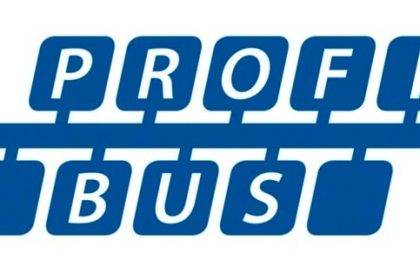
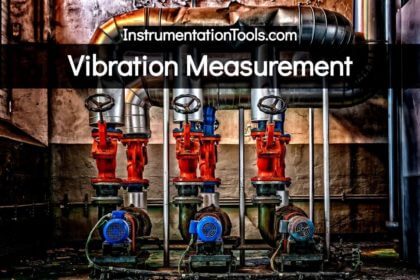



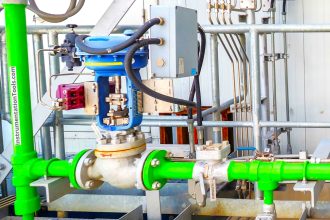
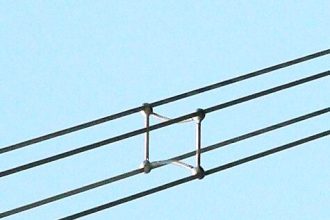
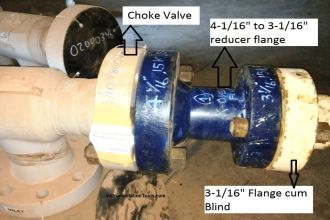



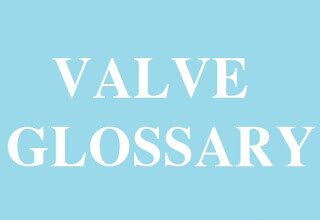

i have a question
how to bypass an instrument transmitter/switch when it is online. and how if there is no override/manual/inhibition option from DCS/SCADA
almost in all dcs systems you can force the input/output card
please send me all interviewing questions about instrumentation
Hi! Send me the list instrumentation industrial!
Thanks!
would you please send me the list and questions and answere if dont mind
From Where i can get the answers of above 300 Questions?